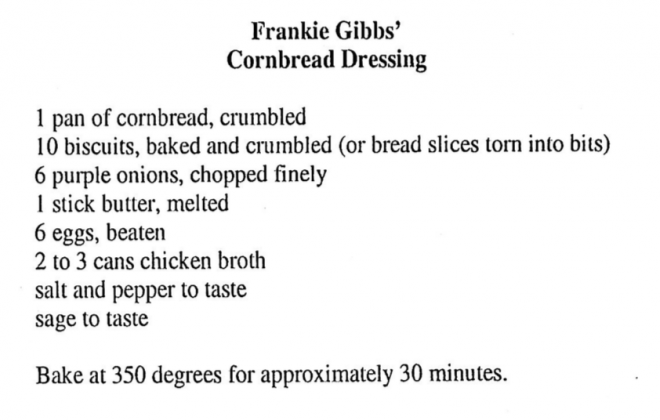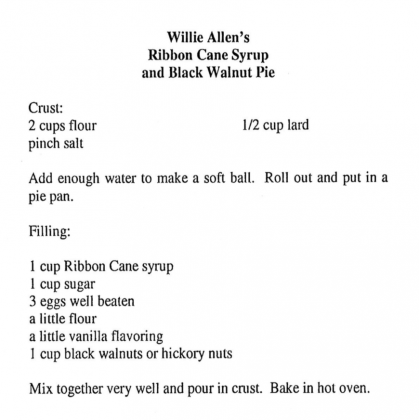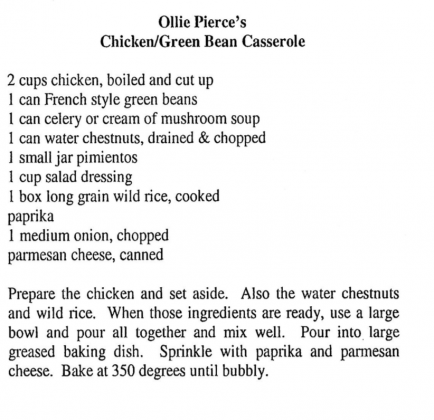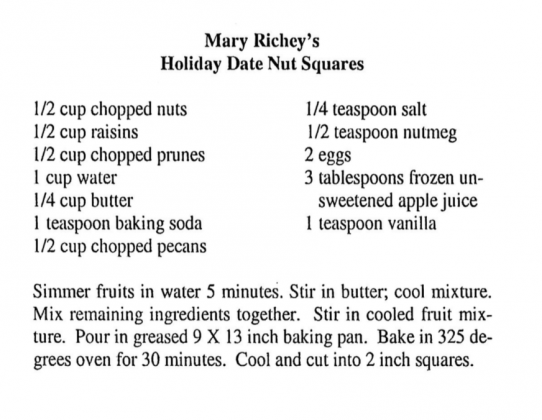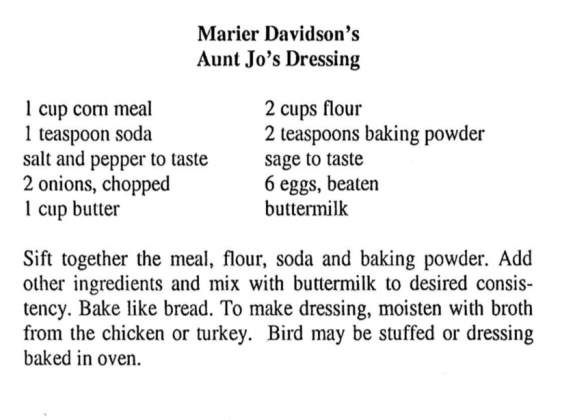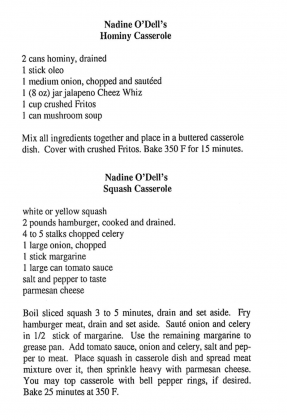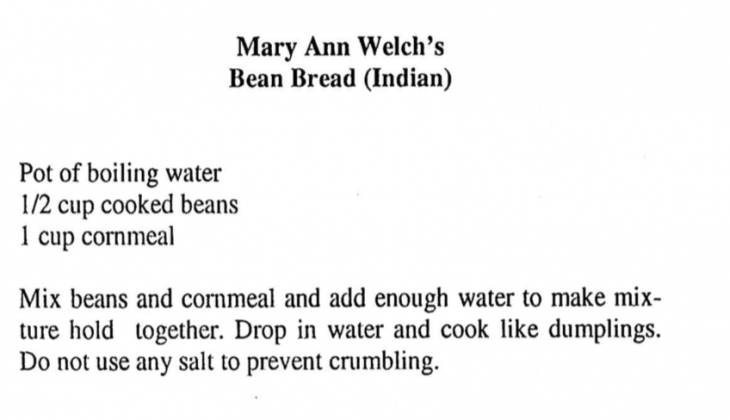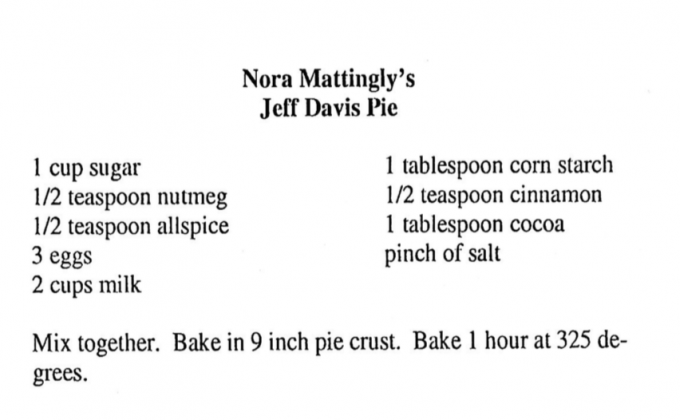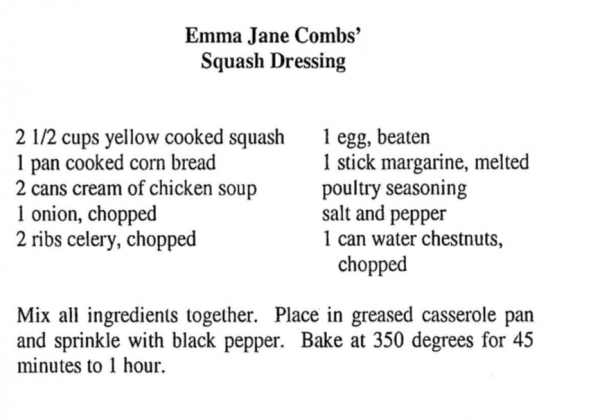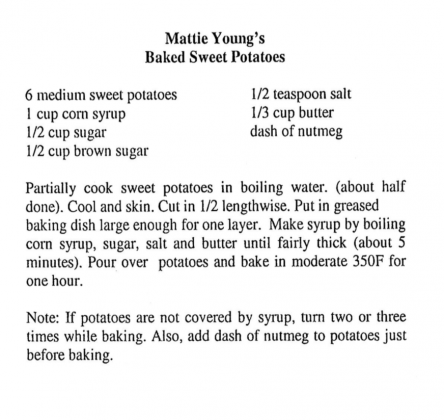History
For more than a century, Hopkins County has been celebrating Thanksgiving in times of plenty and times of poor. A look back at the events and recipes memorialized on this holiday makes us realize we have much to be grateful for in 2019.
HISTORY
Turning the clock back more than 100 years gives us a glimpse into the world of turn-of-the-century Hopkins. In both 1908 and 1916, the Cumby Rustler published a historical account of the history of Thanksgiving, stating George Washington formally started the tradition in the U.S.
A turkey cost 22 cents apiece in Cumby in 1916. The paper also ran an editorial comparing Thanksgiving to the Feast of Tabernacles in the Old Testament.
The Mexican Border War was ongoing not too far from Cumby, but the paper assured residents that soldiers would be fed turkey in their barracks that holiday.
U.S. soldiers had not yet entered into WWI, but they would the following spring in 1917.
In 1916, in Sulphur Springs, the now-defunct Sulphur Springs Gazette ran a page of quotes about thankfulness, featuring diverse authors from Robert Burns to the Bible.
“The families were really big,” said local historian Shirley Patchen. “It wasn’t anything for these families to have 10 kids.”
Getting a Thanksgiving meal on the table left a lot to be grateful for, Patchen said.
During the 1920s, several area churches held special Thanksgiving services called Union Services, which welcomed all people regardless of denomination. A news item of note in 1924 is that the Blackfeet Indian planned a separate Thanksgiving celebration from their white counterparts, which consisted of a picnic in the woods.
In 1926 First Baptist and First Methodist both held their services ahead of the holiday, so the day could be spent “as they wish to be out of town, on huntings or any other way.” Members of the Greenpond community tried to organize a Thanksgiving day quartet in the square, but “the time was not appropriate for such a gathering.” They organized a box dinner on Friday night instead.
That year, Texas Gov. Pat Morris Neff held an address in which he stated what he was thankful for was the American government.
In 1939, a News-Telegram editorial noted that Americans were thankful that year the U.S. was not at war. Nazi Germany had just begun WWII one month earlier in September 1939, but the U.S. did not become one of the allies until the bombing of Pearl Harbor on Dec. 7, 1941. In 1939, Hopkins County remained isolated from the conflict.
By 1942, the News-Telegram published on Thanksgiving that food was running short due to the war effort, and that meat, poultry and dairy products came up short for the holidays. An editorial cartoon ran entitled “We can give thanks everyday” with a picture of a fully-set American Thanksgiving table, while a man read a newspaper with the headline “Starvation in occupied countries, shortages in Britain.”
The Tuesday before Thanksgiving, the community of Addran held a war bond rally that drew 150 people who raised $3,500.
Also in 1942, 15 area Baptist churches sent a large Thanksgiving donation of $660.34 to the Buckner Orphans Home.
For 100 years from the early 1900s until the turn of the century, local papers regaled readers with updates about where many residents of Sulphur Springs, Tira, Dike, Nelta and Sulphur Bluff spent their Thanksgivings and who their guests were if they stayed at home.
The 1958 edition of the News-Telegram had invitations to Thanksgiving dinners as front-page news. In the 1958 edition, an editorial imagined the pilgrims set in 1958 and noted that Americans should be more thankful for their bounty, as the first white settlers would be.
The American Legion on Church St. post hosted a Thanksgiving day dance with covered dishes to pass. The one business that remained open in town in 1958 on the holiday was the Super Handy food store.
In 1959 the News-Telegram celebrated that U.S. living costs had reached a record low on that Thanksgiving day, and turkeys were selling for 8% lower than they had last year at 55 cents apiece.
Law enforcement officers didn’t take a day off that year, the News-Telegram noted, as local state highway patrol officer Jim Briggs noted they were “on the lookout for law-breakers this Thanksgiving.” Much as in 2019, the county had experienced an outbreak of grass fires, but “all five volunteers” at the Sulphur Springs Volunteer Fire Department planned on taking the day off with their families.
In 1978, however, SSFD spent Thanksgiving day teaching a CPR class.
In 1986, the city of Sulphur Springs marked the day with the installation of a four-way stop at College Street.
On Thanksgiving day in 1988, proposals from Texas Department of Transportation to widen State Highway 19 from two to four lanes seemed promising. Also in 1988, Hopkins County Sheriff’s Office stepped up holiday patrols, as the gift-giving season made “good citizen observers” a target of burglaries.
The 1991, News-Telegram Thanksgiving edition noted that lines at food banks became crowded, as a holiday centered around eating met the recession. First Methodist Church fed approximately 600 people that year, the paper read.
In 1995, Hopkins County saw snow on Thanksgiving day, but East Texas was still considered under a drought, and the Texas Forest Service issued a burn ban.
In 1998, Meal-A-Day didn’t take the holiday off and delivered about 30 portions of turkey and potatoes to those unable to leave their homes. The city mourned the loss of former city manager Carl W. Reihn, killed in a motorcycle crash the Wednesday before Thanksgiving in Fourney. Arbala, Reilly Springs, Sulphur Bluff and Tira all held Thanksgiving community get-togethers.
In 2000, a rainy and wet Thanksgiving with 2.75 inches of precipitation lead to power outages county-wide, and HCSO was working overtime to help people get their electricity up and running.
VITTLES
The first mention of pumpkin pie being eaten in Hopkins County for Thanksgiving appears in a 1911 edition of the Cumby Rustler. The editorial suggests using old Halloween pumpkins to make the pie, although unlike today, the process by which to boil, strain and can the pumpkin was much more difficult than the store-bought puree we see today.
The 1961 News-Telegram gave detailed instructions for how to prepare and freeze those economically used pumpkins, as commercial refrigerators and freezers were newly widespread in Hopkins County. In the 1990 News-Telegram, the Food Fair page presented four different ways to make pumpkin pie, although all used canned pumpkin.
Canning plays a large role in Hopkins County foods from pioneer days, and many can expect to see pickles of all sorts on their Thanksgiving-day tables. Squash and cucumber pickles are two staples, but beets and okra also make an appearance, with a variety of recipes ranging from spicy to sweet. During the late 1940s, the dish called “pimento” started to make an appearance on the county’s collective table. Chopped nuts, ground cooked meat and mayonnaise dressing made up one iteration of the dish. The mid-1970s marked the introduction of an East Texas favorite to the recipe: pimento cheese.
Throughout the 1950s, published recipes found it in vogue to add thickening agents such as evaporated condensed milk or cream cheese to pumpkin pie. Perhaps that was partly due to the Carnation Milk Plant, which opened in 1937 and paved the way for dairies to expand in the county. Hopkins County was not at a lack for fresh produce. Stone fruits such as apricots and peaches were a common staple of feasting traditions in pies and sauces alike as the Cotton Belt railroad ran through town, shipping 1,000 carloads of peaches and sweet potatoes between Sulphur Springs and Pittsburg from July to December 1925. Sellers Cafeteria on Church Street added poppyseed dressing to fresh fruit salad, a dish that may find itself on many Hopkins County tables this Thanksgiving.
In 1949, another holiday tradition made its way into print: Thanksgiving pecan pies.
“It was pecans, pecans and more pecans,” Patchen noted.
Former mayor and local historian John Sellers remembers well the lunch service at Sellers Cafeteria and her delicious pecan pies. His father’s cousin, Daisy Sellers, the proprietor, fed many hungry Hopkins County “traditional Thanksgiving-type,” Sellers noted. “She had dressing and turkey and all that.”
Sometimes this even included those who preferred not to cook, Sellers says.
Sugar plays a role in most Hopkins County pies for its role as a preservative, including pecan pie, buttermilk pie, chess pie and Karo pie.
Turkey has not always been the norm in Hopkins County. In 1950, some in Hopkins County preferred hens to turkey for the central bird in a Thanksgiving meal, as they were more affordable at 45 cents apiece.
“I heard once where a family didn’t have any money, and their neighbor gave them a ham and a deer,” Patchen noted. “Deer would have been plentiful then.”
And for the day after Thanksgiving, Hopkins County is not short on recipes to keep your leftovers from going to waste. Potato patties make use of mashed potatoes, while cornbread dressing will take up whatever you didn’t eat the night before. Mixed leftovers can be incorporated into a casserole or stew, although in recent years, these dishes have taken center stage in the Hopkins County Thanksgiving.
For the past 100 years, Hopkins has been a place of waste-not, want-not, and its recipes reflect a people that are grateful for what they’ve earned to break bread at the Thanksgiving table.


